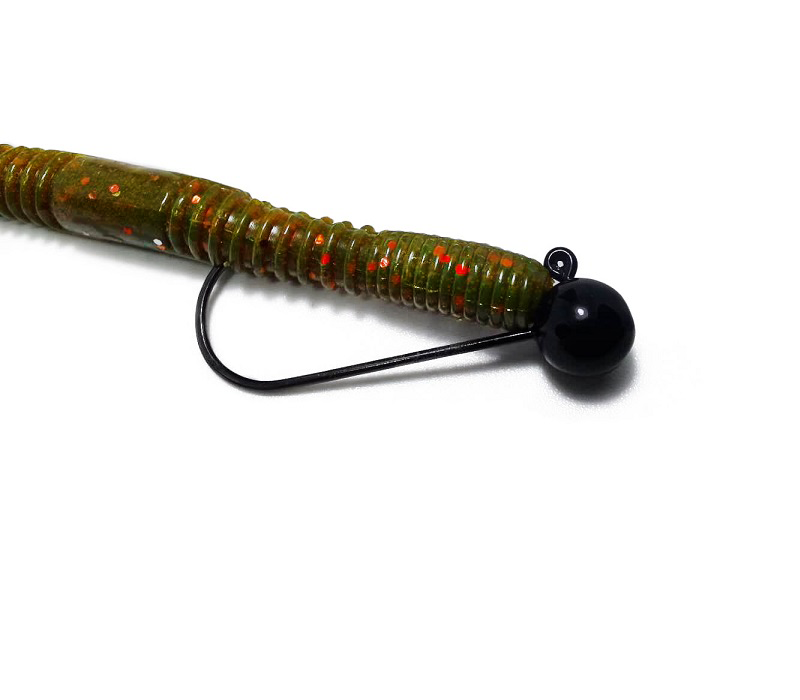Fishing for bass in muddy water can seem like a puzzle, but these challenging conditions often hide opportunities to catch aggressive, trophy-sized fish. When visibility drops, bass rely less on sight and more on their lateral line—a sensory system that detects vibrations and movement. By adapting your tactics to emphasize sound, contrast, and strategic positioning, you can turn murky water into a productive fishing ground. Below, we’ll explore proven techniques for locating and enticing bass in muddy environments while prioritizing ethical practices and the use of reliable fishing hooks.

Target Areas with Structure and Cover
In muddy water, bass gravitate toward physical structures that provide ambush points and protection. Focus on submerged logs, rock piles, docks, or vegetation where bass can lie in wait for prey. Depth changes, such as creek channels or drop-offs near shorelines, are also prime spots. These areas create natural funnels for baitfish, making them ideal hunting grounds. Additionally, shallow coves near inflowing water (like streams or runoff) often hold slightly clearer water and active fish, especially after rain.
Select Lures That Create Noise and Vibration
Since bass depend on their lateral line to locate prey in low visibility, choose lures that generate strong vibrations or disruptive sounds:
Spinnerbaits: Opt for models with large Colorado blades, which produce a steady, thumping vibration. Slow-roll these lures near the bottom to mimic crawfish or baitfish.
Lipless Crankbaits: These lures excel in muddy water due to their internal rattles and erratic action. A slow, stop-and-go retrieve allows the lure to deflect off cover, triggering reaction strikes.
Jigs with Trailers: A heavy jig paired with a bulky trailer (like a paddle-tail grub) creates both movement and displacement. Dark colors such as black/blue or green pumpkin stand out against murky backgrounds.
For topwater action in warmer months, try chugging-style lures or buzzbaits. Their splashing and gurgling sounds draw bass to the surface, even in stained water.

Use High-Contrast Colors
Color choice becomes critical when visibility is limited. Bass need to detect your lure quickly, so prioritize bold, contrasting hues:
Bright Colors: Chartreuse, neon orange, or white reflect light and create a visible silhouette. These shades work well for crankbaits or spinnerbaits.
Dark Tones: Black, dark blue, or junebug provide a stark outline against muddy water, making them ideal for soft plastics or jigs.
Slow Down Your Presentation
Bass in muddy water are less likely to chase fast-moving prey. Adjust your retrieve to keep lures in the strike zone longer:
Slow Rolling: Maintain a steady, slow pace with spinnerbaits or swim jigs to maximize vibration.
Vertical Jigging: Drop a heavy jig or spoon straight down near submerged structures. Let it hit the bottom, then lift and drop the rod tip to imitate injured prey.
Pause and Shake: When using soft plastics like worms or creature baits, let the lure sit motionless for several seconds after a hop. Subtle shakes of the rod tip can mimic natural movements.
Adapt to Seasonal Patterns
Cold, Muddy Water (Winter/Early Spring):
Bass congregate in deeper, slower-moving areas near channels or submerged brush. Use slow-sinking lures like blade baits or hair jigs. Focus on areas warmed by sunlight or incoming runoff.
Warm, Muddy Water (Summer/Fall):
Target shallow flats with vegetation or flooded timber. Topwater frogs or weedless spoons work well early in the morning or late in the day. In heavily stained water, switch to vibrating jigs or chatterbaits to maintain bottom contact.
Optimize Your Fishing hooks
The right fishing hooks can improve hookup rates and minimize harm during catch-and-release:
Wide-Gap Hooks: Ideal for Texas-rigged soft plastics, these hooks provide better penetration in thick cover.
Heavy-Duty jig hooks: Choose reinforced hooks when flipping or pitching near rocks or wood to prevent bending.
Barbless Options: Crimp down barbs for easier hook removal, especially if practicing catch-and-release. If a fish swallows a hook deeply, cut the line close to the mouth instead of risking injury by forceful removal.

Prioritize Stealth and Sensitivity
Muddy water doesn’t mean bass are less cautious. Use heavier line (15–20 lb fluorocarbon or braid) to handle abrasion and improve sensitivity. Stealthy approaches, such as electric trolling motors or anchoring quietly, prevent spooking fish in shallow areas.
Ethical Fishing Practices
Minimize Handling: Keep the fish in the water as much as possible. Wet your hands before touching it to protect its slime coat.
Revive Exhausted Fish: If a bass appears sluggish, hold it upright in the water until it swims away strongly.
Avoid Overfishing Pressured Areas: Rotate spots to prevent stressing local populations.
Final Thoughts
Success in muddy water hinges on understanding bass behavior and adapting your techniques accordingly. By emphasizing vibration, contrast, and slow presentations, you’ll increase your chances of enticing strikes even in the murkiest conditions. Remember to prioritize the fish’s well-being by using appropriate fishing hooks and handling methods, ensuring healthy populations for future anglers.
Muddy water may test your patience, but with the right strategies, it can become one of the most rewarding environments for bass fishing. Stay persistent, experiment with different lures, and keep refining your approach—every cast brings you closer to unlocking the secrets of these elusive fish.